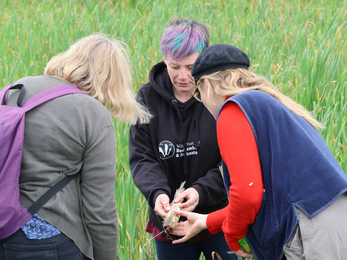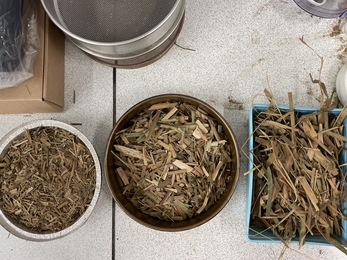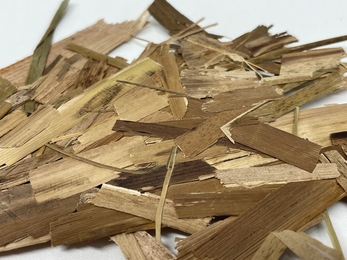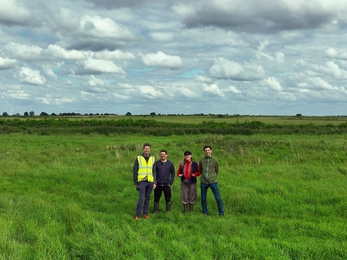Overview:
In March 2024, Georgemma Hunt began a PhD within the Sustainability Research Institute (SRI) at the University of East London. Funded by The National Lottery Heritage Fund as part of the Peatland Progress project at the Great Fen, this PhD will be investigating the potential for using Typha latifolia (Great reedmace, cattail or common bulrush) within a sustainable, bio-based building material. The PhD is supported internally at SRI by a dedicated, interdisciplinary team of experts, including:
- Dr Bamdad Ayati, Senior Research Fellow at SRI, is a materials chemist with expertise in low-carbon building materials and one of the innovators behind UEL's recent innovative material application - Sugarcrete.
- Richard Lindsay, Head of Environmental Sciences at SRI, is an internationally recognised specialist in peatland conservation.
- Dr Jack Clough, Research Fellow at SRI, focuses on wetland conservation and paludiculture. He recently completed his PhD on Sphagnum moss farming and aims to continue developing paludiculture through the Peatland Progress project at the Great Fen.
Georgemma is a hands-on researcher with a background in architecture. She received a first-class undergraduate degree in Architecture at Cambridge (2015-18) and a distinction for her Masters in Sustainable Architecture at the Centre for Alternative Technology (CAT) in Wales (2021-23). During her Masters, she investigated the feasibility of an innovative bio-based insulation material – bracken-lime – that makes use of abundant biomass feedstocks from conservation as an alternative to the growing use of hemp in concrete-adjacent products. Her specific research interest is in the development of regenerative building materials that positively contribute to building efficiency, occupant health and sustainable land use.









